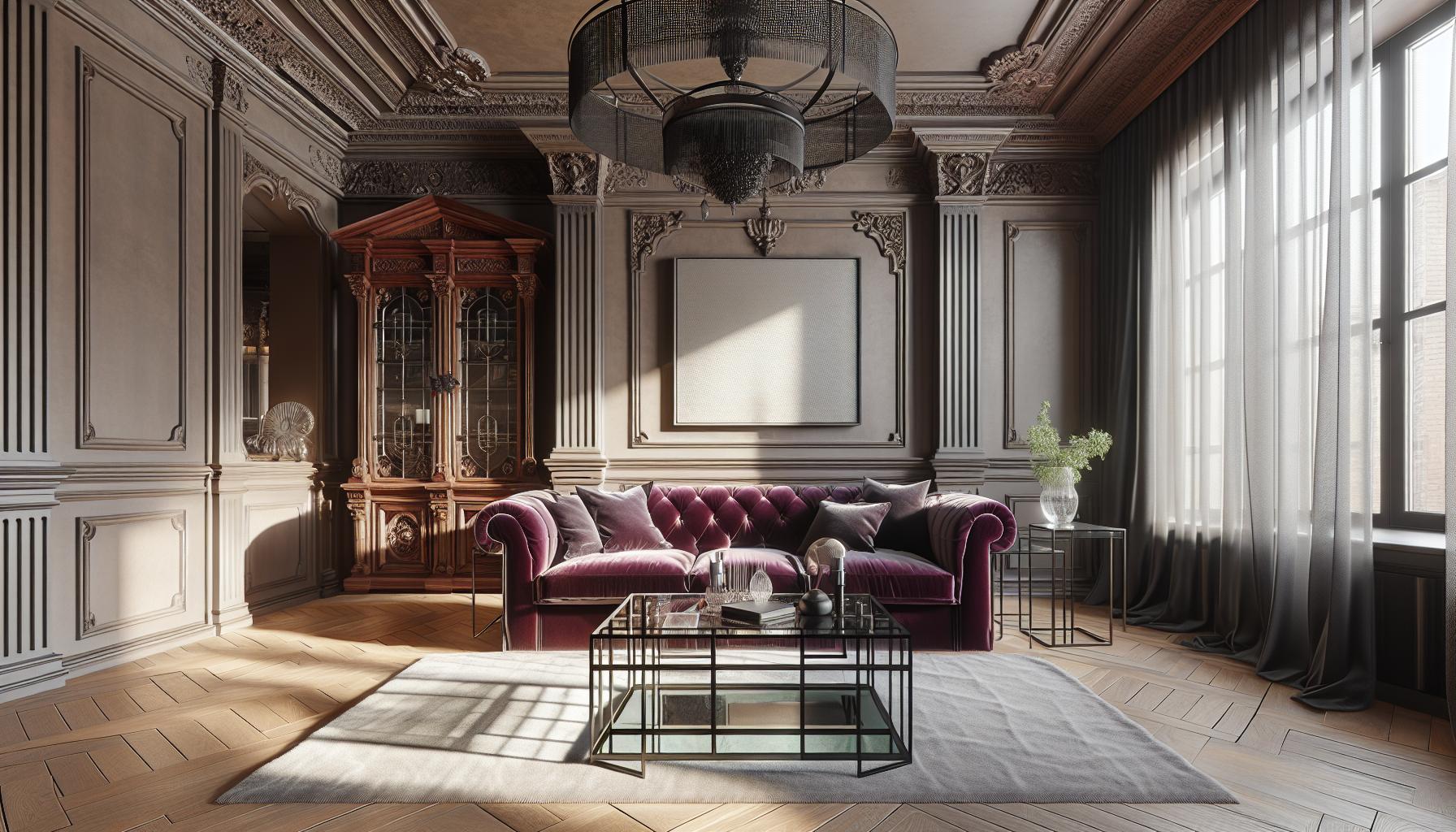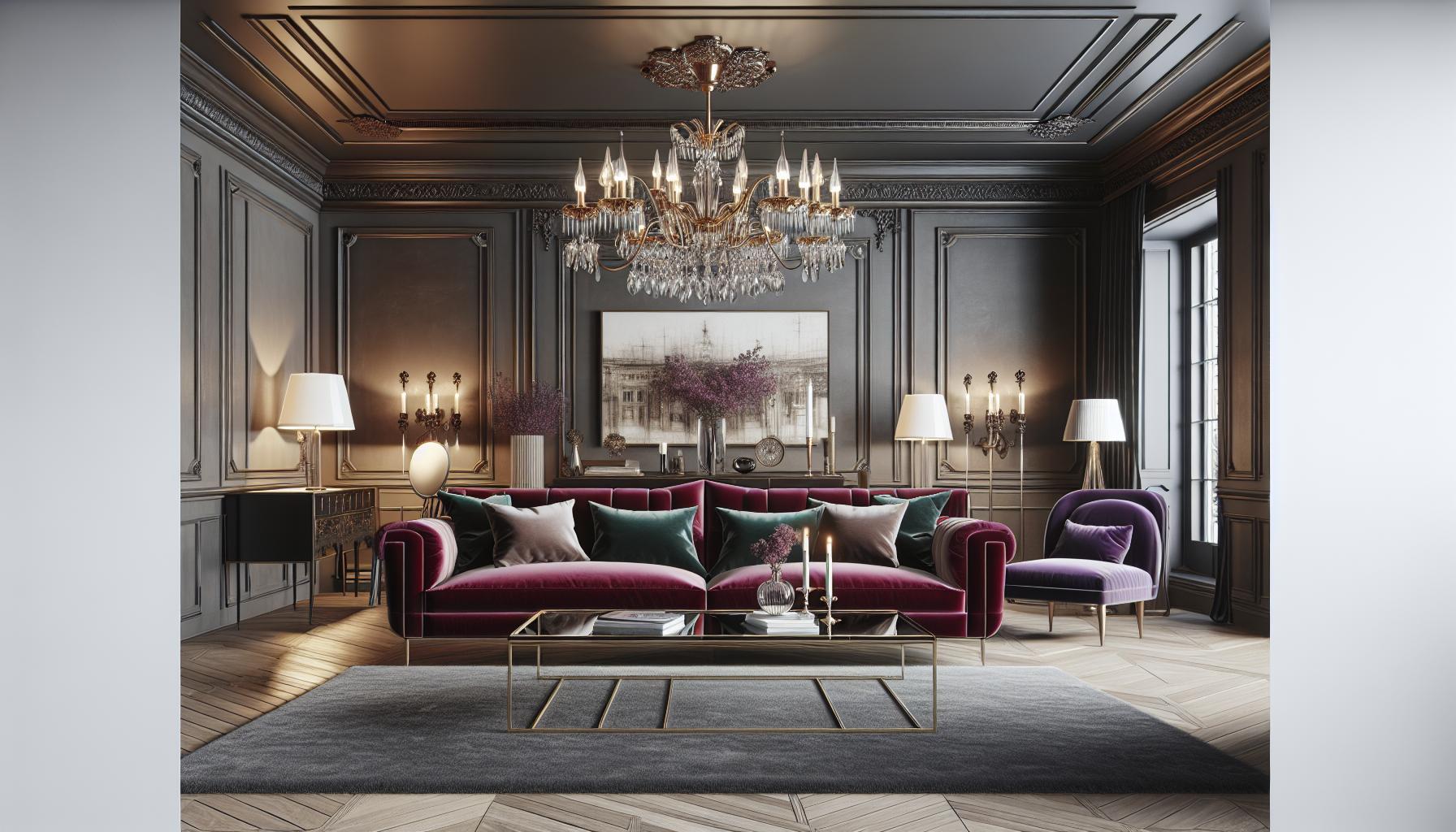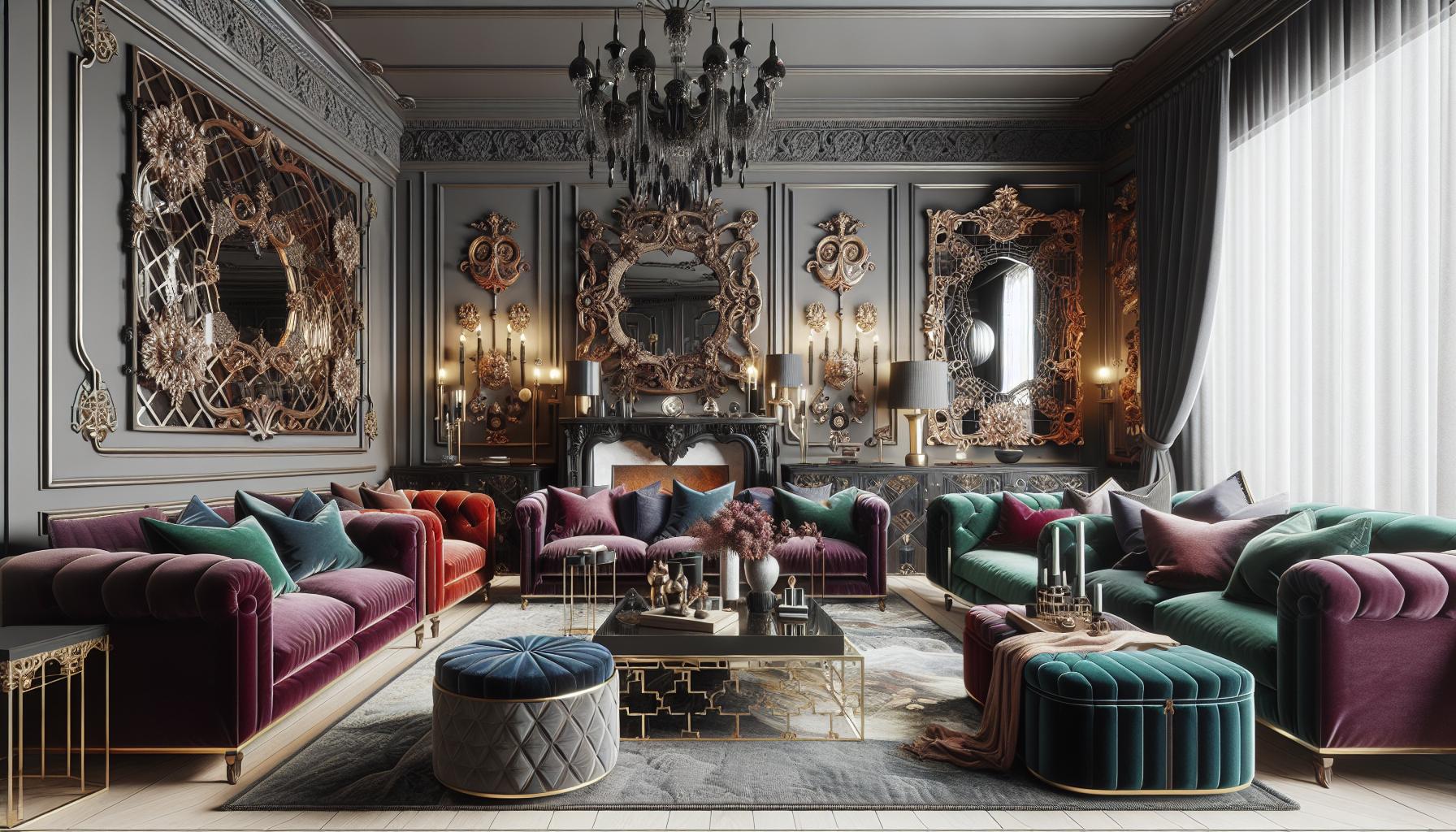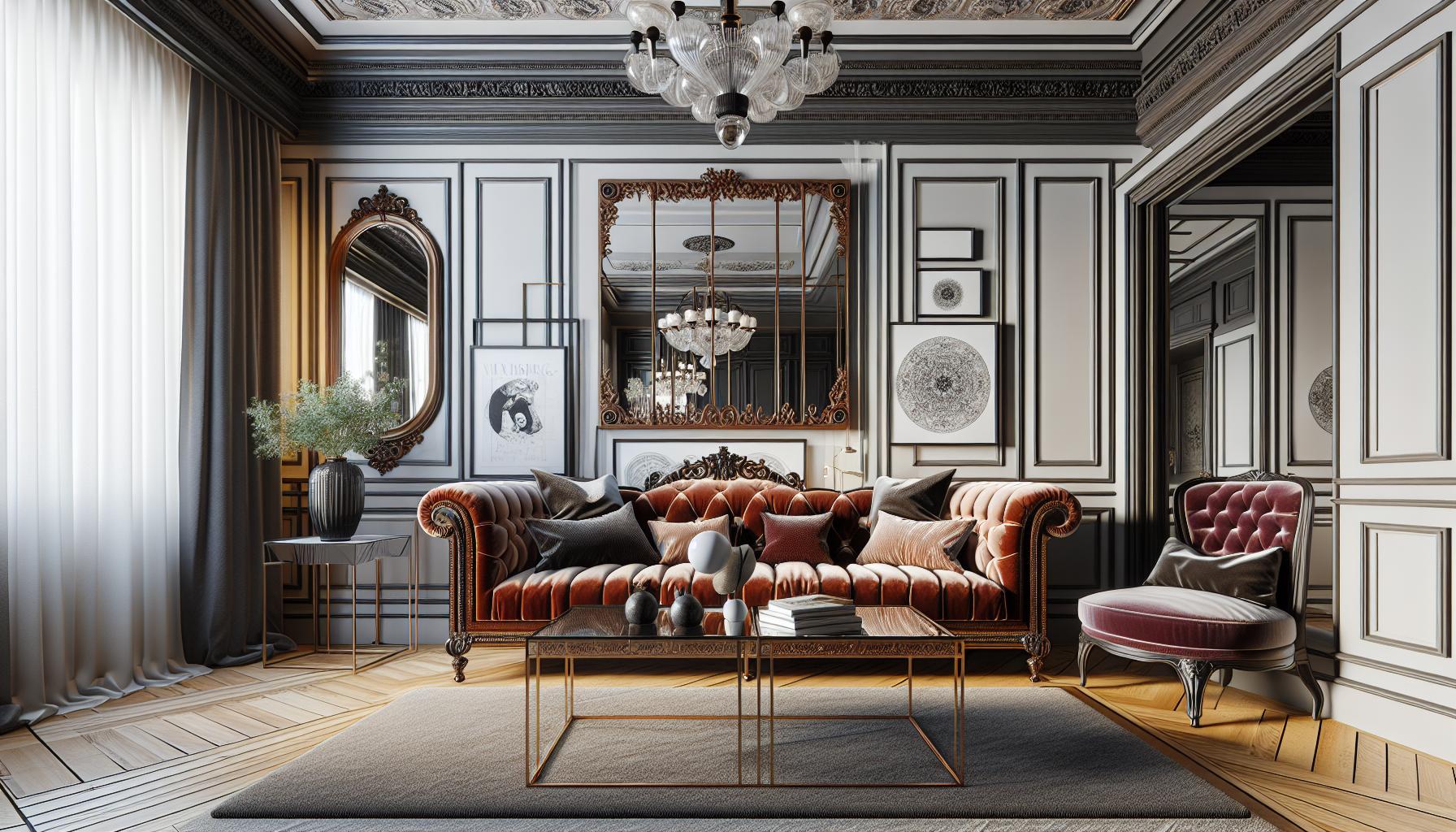
When I think of Victorian style, images of opulent fabrics, intricate woodwork, and grandiose furnishings come to mind. This timeless aesthetic, rooted in the 19th century, continues to captivate with its elegance and charm. Today, modern Victorian interior design breathes new life into these classic elements, blending them seamlessly with contemporary touches to create spaces that feel both nostalgic and fresh.
Incorporating Victorian style into modern interiors isn’t just about recreating the past; it’s about reimagining it. By mixing rich textures with minimalist lines and juxtaposing antique pieces against sleek, modern backgrounds, we can craft a unique ambiance that pays homage to history while embracing the present. This fusion offers endless possibilities for those looking to add a touch of sophistication and warmth to their homes. Whether you’re a fan of vintage allure or contemporary chic, modern Victorian design offers a versatile approach to interior decorating.
Key Takeaways
- Timeless Fusion: Modern Victorian interior design seamlessly blends classic 19th-century elegance with contemporary touches, resulting in spaces that evoke both nostalgia and freshness.
- Key Characteristics: It features opulent fabrics, intricate woodwork, and ornate details, paired with minimalist lines and modern materials for a balanced aesthetic.
- Color and Contrast: Dark jewel tones intermingle with neutral shades while luxurious textures and patterns create a rich yet streamlined visual experience.
- Furniture and Decor: Incorporating vintage pieces alongside modern furniture, like tufted velvet sofas with minimalist glass tables, bridges historical opulence and current simplicity.
- Challenges and Considerations: Achieving this style requires attention to detail in balancing elements, tackling potential high costs, and sourcing authentic pieces or quality reproductions.
Victorian Style Modern Victorian Interior Design
Victorian style interior design captivates with its timeless elegance and ornate details. It combines luxury with intricate craftsmanship, creating spaces that exude sophistication and charm.
Key Characteristics of Victorian Design
Victorian design features several distinct elements. Rich textiles such as velvet and brocade cover furnishings, offering opulence and comfort. Detailed woodwork, often seen in moldings and mantels, showcases craftsmanship. Furniture pieces are generally grand, with curved lines and carved embellishments. Rooms display a mix of patterns and bold colors, creating a visual feast. Decorative accents like stained glass and elaborate light fixtures add to the ambiance, reflecting Victorian grandeur.
Historical Context and Evolution
The Victorian era, spanning 1837-1901, influenced interior design significantly. As the British Empire expanded, it introduced diverse materials and styles from around the world. Advances in manufacturing during the Industrial Revolution enabled mass production of previously exclusive decorative items. Over time, Victorian design has evolved, adapting to modern tastes and technologies. Today’s interpretations often simplify original elements, retaining the ornate feel while introducing contemporary sensibilities. This evolution allows for a seamless blend of past opulence and present minimalism, appealing to varied aesthetic preferences.
The Fusion: Modern Victorian Interior Design

Modern Victorian interior design combines classic Victorian elements with fresh, contemporary features. This style creates a unique aesthetic balance, reflecting the grandeur of the past while embracing modern sensibilities.
What Defines Modern Victorian Today?
Today, Modern Victorian is defined by its ability to harmonize rich historical details with streamlined modern touches. Elegant ornamentation coexists with simple, unadorned surfaces. While traditional Victorian designs feature intricate patterns and lavish furnishings, Modern Victorian reinterprets these with sleeker shapes and muted tones. For example, a tufted velvet sofa may sit alongside a minimalist glass coffee table, bridging two stylistic eras.
Blending Classic and Contemporary
Classic and contemporary elements merge seamlessly within Modern Victorian settings. Designers use a variety of strategies to achieve this blend:
- Color Palette: Dark jewel tones common in Victorian interiors mix with neutral shades like gray and beige, providing a balanced backdrop.
- Materials: Traditional materials such as mahogany and marble pair with contemporary metals like stainless steel.
- Textures: Luxurious fabrics—such as brocade and silk—enhance sleek, modern structures, adding depth and interest.
- Lighting: Ornate chandeliers and modern lighting fixtures coexist, enhancing the dual stylistic features.
By integrating these elements, Modern Victorian design infuses spaces with character and sophistication, making it a versatile option for diverse interiors.
Elements of Modern Victorian Interior Design

Modern Victorian interior design breathes new life into classic aesthetics by embracing both history and innovation. I blend traditional features with contemporary elements to craft spaces that are both nostalgic and fresh.
Colors and Patterns
I choose colors that represent both eras. Dark jewel tones like emerald and ruby add depth, while neutral shades like beige and gray introduce modern simplicity. Patterns mix bold florals with geometric designs, fostering a balance between intricate Victorian and streamlined modern motifs. Damask and paisley, for example, coexist with subtle stripes or chevrons, creating visual interest.
Furniture and Decor
Furniture combines opulence with clean lines. I often select traditional pieces, such as carved wooden chairs, yet place them alongside minimalist tables crafted from glass or metal. Decor includes ornate mirrors and contemporary art that both reflect rich Victorian embellishments and sleek modern tastes. By integrating curvaceous settees with angular accessories, the harmony of both styles emerges clearly.
Textures and Materials
Textures elevate a room’s tactile experience. I incorporate luxurious textiles like velvet and silk for upholstery, counterbalanced with modern materials like leather and chrome in accents. Wood, often mahogany or walnut, remains central, offering a nod to ornate Victorian craftsmanship. Meanwhile, materials like steel and glass provide a lighter, contemporary touch, ensuring a sophisticated blend of past and present.
Tips for Achieving a Modern Victorian Look

Achieving a Modern Victorian look involves blending vintage charm with contemporary style. This design approach uses classic Victorian elements and pairs them with modern aesthetics, creating a unique fusion of old and new.
Incorporating Old and New Elements
I find incorporating both old and new elements crucial for a balanced Modern Victorian style. Classic pieces like ornate mirrors or Victorian-era furniture anchor the space in history. Pair these with modern accents, such as sleek metal fixtures or minimalist artwork, to contrast and complement the elegance. Mixing luxurious textures like velvet with streamlined materials like glass or metal helps unite the old-world opulence with a modern twist.
Decorating Ideas for Different Rooms
Each room benefits from a tailored design approach when seeking the Modern Victorian style. In the living room, I suggest combining a grand, Victorian-inspired sofa with a modern coffee table made of glass or metal. For the dining room, ornate woodwork and a traditional chandelier can pair with contemporary chairs for an updated look. The bedroom offers an opportunity to mix Victorian-patterned wallpaper with minimalist bedding. Bathrooms should balance clawfoot tubs or traditional fixtures with modern vanities and lighting to create a cohesive yet eclectic environment.
Pros and Cons of Modern Victorian Style
Modern Victorian style melds the opulence of the past with the simplicity of the present, creating a unique and captivating aesthetic. While this design approach offers several benefits, it also comes with challenges to consider.
Advantages of the Style
- Versatility: This style suits diverse interiors—from grand residences to modern apartments—by combining historic elegance with contemporary lines. Rich textures like velvet or brocade add warmth, and minimalist details introduce balance.
- Visual Interest: With color combinations like dark jewel tones and neutral shades, spaces gain depth and sophistication. Mixing patterns, such as bold florals with geometric designs, enhances the visual dynamic.
- Timeless Appeal: By integrating Victorian and contemporary elements, interiors achieve a timeless quality. Ornate mirrors with sleek lighting fixtures create a look that remains stylish through changing trends.
- Character and Elegance: The blend of rich historical details and simple surfaces infuses character. Elegant ornamentation paired with modern materials adds layers of sophistication.
- Balancing Styles: Successfully merging Victorian and modern elements requires skill. Overemphasizing one style can disrupt the harmony, so careful selection of furniture and decor is essential.
- Cost: Incorporating luxurious materials and intricate woodwork often demands higher investment. Prioritizing key elements while maintaining budget-friendly options helps achieve the desired aesthetic without overspending.
- Complexity: Achieving the right mix of detail and simplicity poses a design challenge. While ornate features enhance aesthetics, they can overwhelm spaces when not balanced correctly.
- Availability: Finding authentic Victorian pieces or replicas matching modern counterparts may be difficult. Exploring antiques or high-quality reproductions facilitates this blend, though it requires effort and patience.
Opulent Elements with Sleek Touches
Embracing Modern Victorian interior design offers a unique opportunity to blend the elegance of the past with the simplicity of the present. By thoughtfully combining opulent Victorian elements with sleek modern touches, we can create spaces that are both timeless and innovative. This style not only caters to diverse aesthetic preferences but also allows for a personal expression that feels both nostalgic and current. While challenges exist in achieving the perfect balance, the result is a sophisticated and character-filled home. With careful selection and creative design, Modern Victorian interiors can truly transform any space into a harmonious blend of history and modernity.
